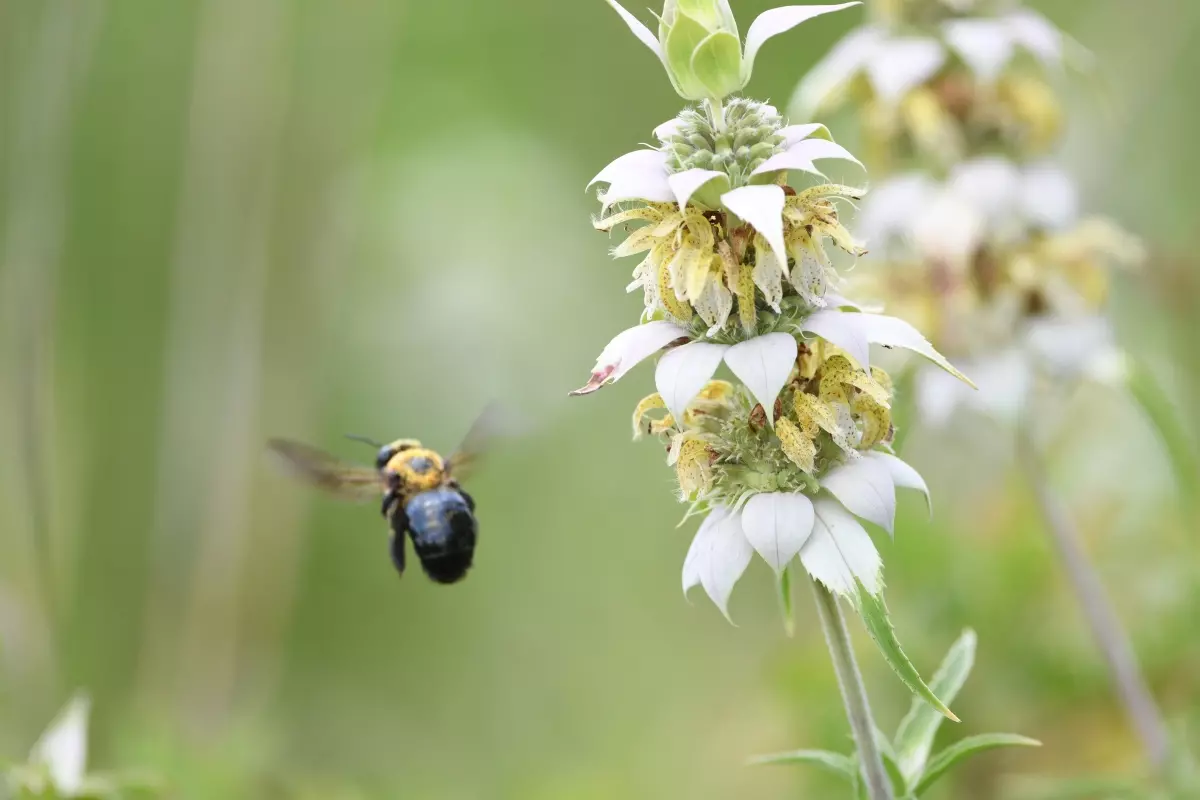Striking Forms & Bold Blooms
When you think “native wildflower,” your mind probably goes to prairie classics or spring ephemerals. But there’s a whole lineup of plants that break the mold — flowers with unusual form, color, or structure that stop you in your tracks. These five bring pollinator value, bold personality, and real garden presence.
Because we’re all a little weird in our own way — and the garden’s a perfect place to show it. The more variety, the more character.
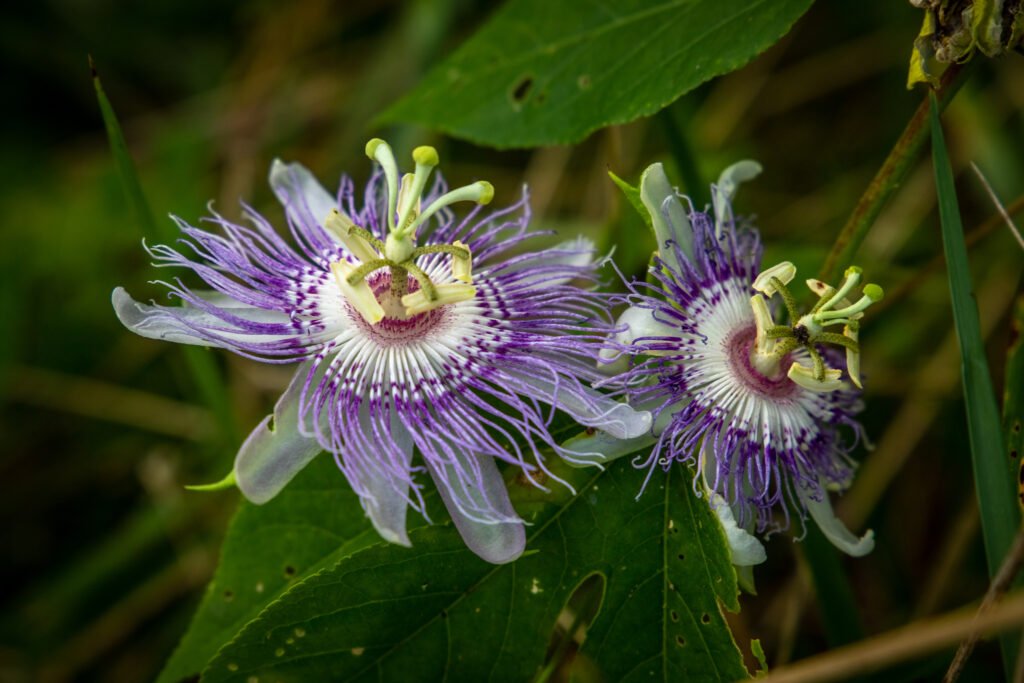
1. Purple Passionflower (Passiflora incarnata)
Family: Passifloraceae
Common Names: Purple Passionflower, Maypop
Height: 6–20′ (vine)
Bloom Time: Mid-summer to early fall
Flower Color: Lavender-purple
Native Region: Southeastern and Midwestern U.S.
Hardiness Zones: 6–10
Growing Conditions:
- Sun: Full sun to part shade
- Soil: Average to well-drained
- Moisture: Medium to dry
- Support: Needs a trellis, fence, or shrub to climb
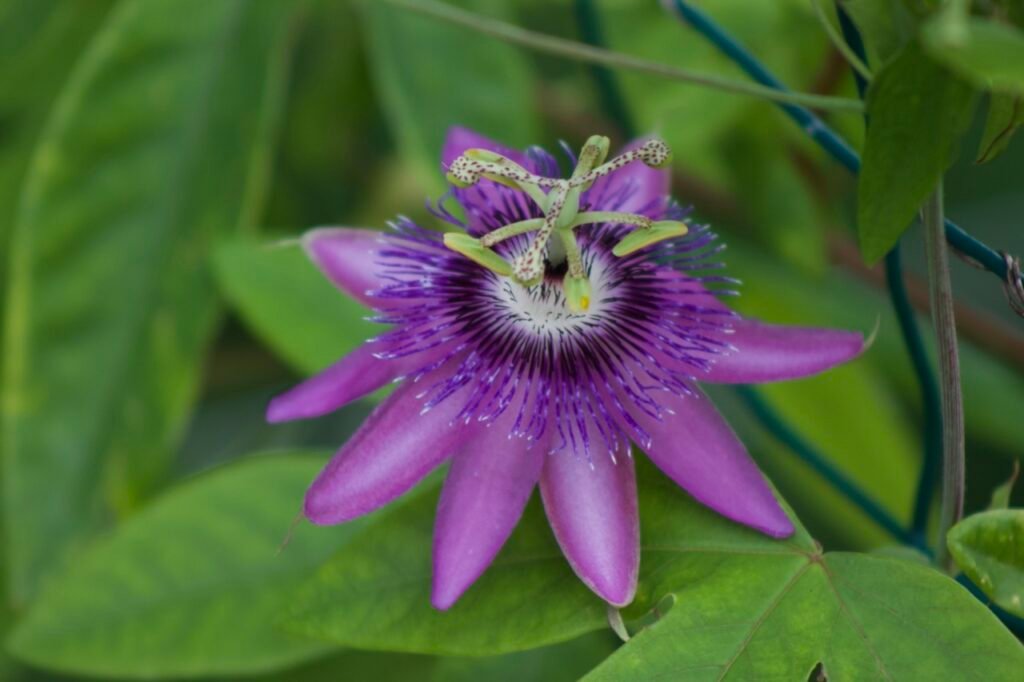
How to Grow:
Can be started from cold-stratified seed or potted nursery stock. It may die back in winter in northern zones, but regrows from the root. Sprawling, so give it space.
Wildlife Value:
Host plant for Gulf Fritillaries and Zebra Longwings (primarily in the southern part of its range), plus bees and hummingbirds. The edible fruit also attracts wildlife — and curious gardeners.
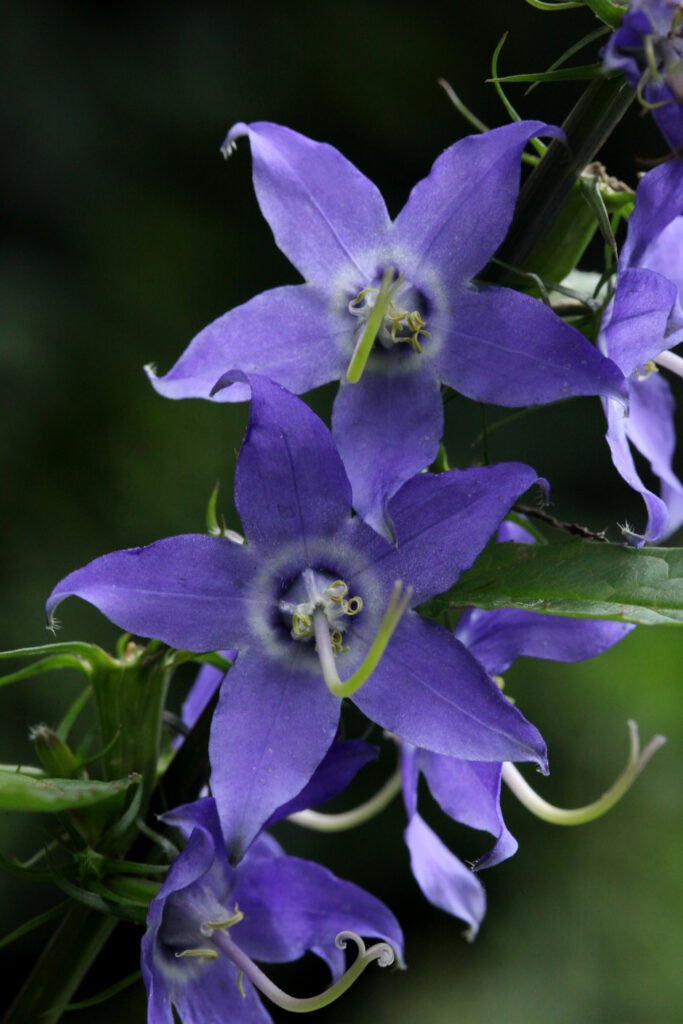
2. Tall Bellflower (Campanula americana)
Family: Campanulaceae
Common Names: Tall Bellflower, American Bellflower
Height: 2–6′
Bloom Time: Mid to late summer
Flower Color: Soft violet-blue
Native Region: Eastern and Central U.S.
Hardiness Zones: 4–8
Growing Conditions:
- Sun: Part shade to light sun
- Soil: Rich, well-drained, moist
- Moisture: Medium
- Note: Biennial — foliage in year one, blooms in year two
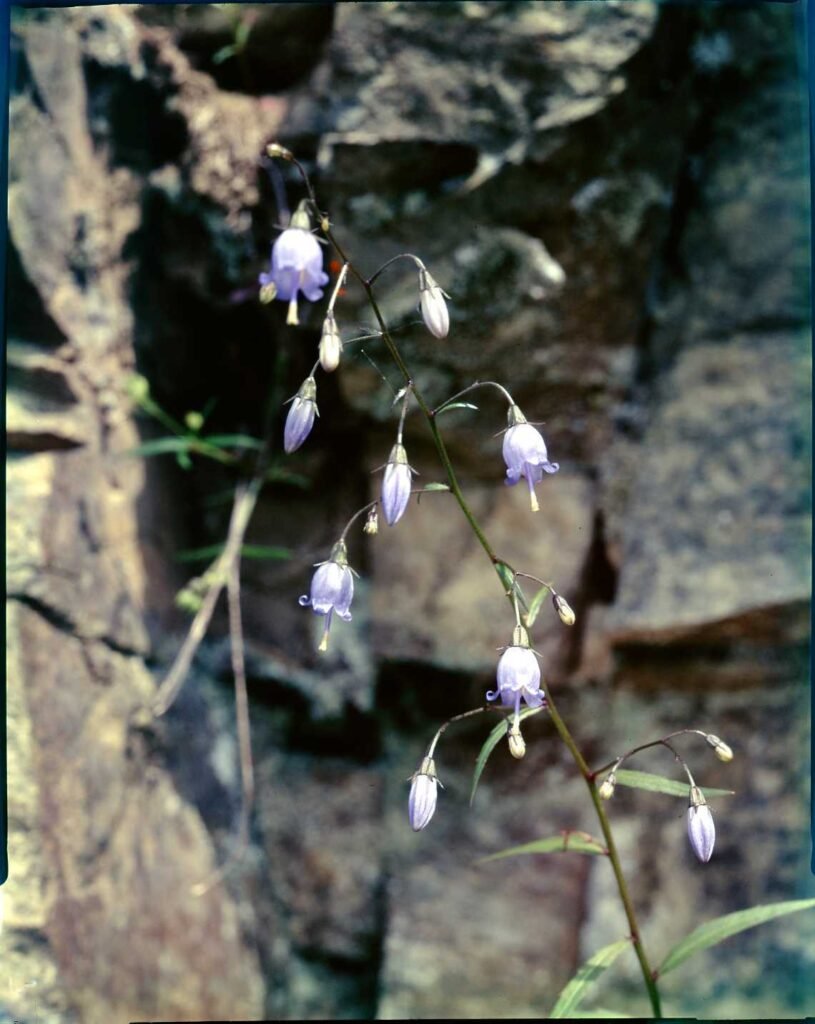
How to Grow:
Direct sow in fall or cold-stratify and plant in spring. Allow it to reseed naturally for future blooms. Works well along woodland edges or shady borders.
Wildlife Value:
Attracts native bees, including small sweat bees and long-tongued species. Its open flowers are accessible to a wide range of pollinators.
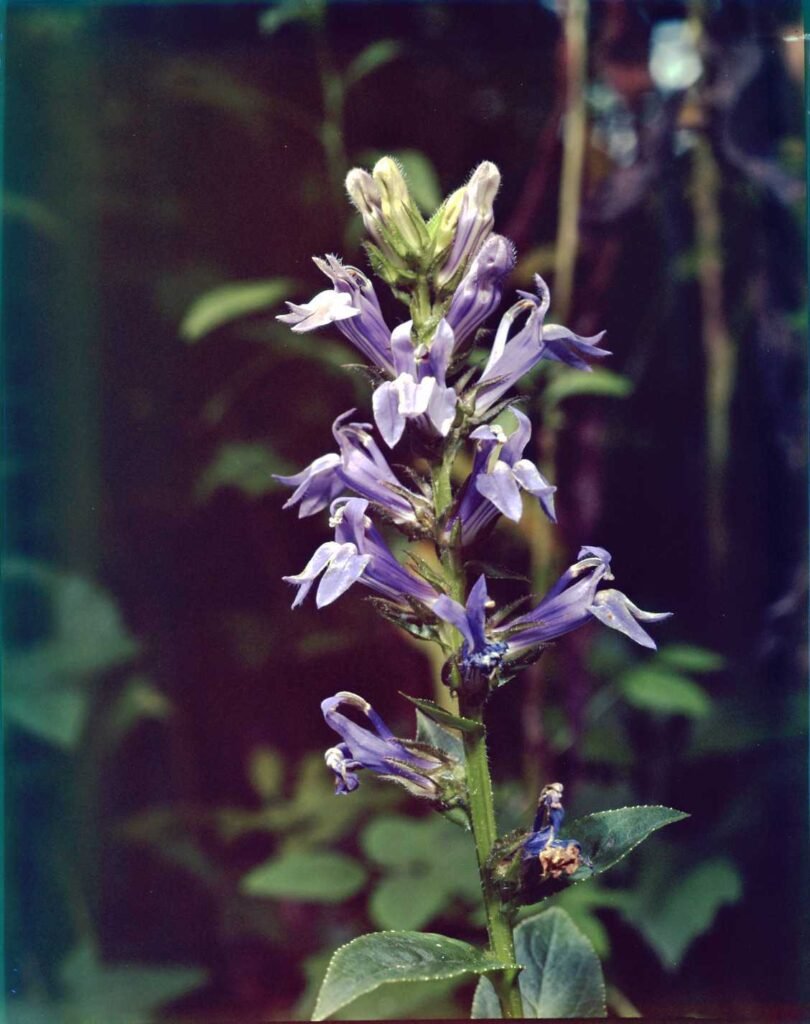
3. Great Blue Lobelia (Lobelia siphilitica)
Family: Campanulaceae
Common Names: Great Blue Lobelia, Blue Cardinal Flower
Height: 2–4′
Bloom Time: Late summer through fall
Flower Color: Rich blue to violet
Native Region: Eastern and Central U.S.
Hardiness Zones: 4–9
Growing Conditions:
- Sun: Full sun to part shade
- Soil: Moist, organic-rich
- Moisture: Medium to wet
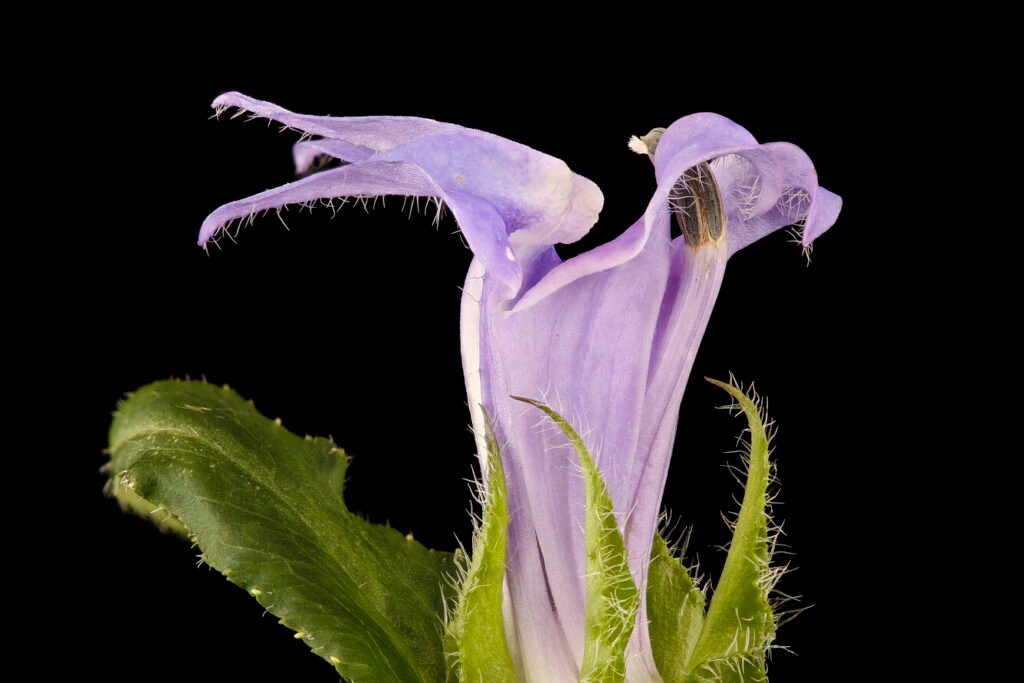
How to Grow:
Best suited for moist areas like rain gardens, stream edges, or consistently watered beds. Grows easily from seed or plugs. Keep soil moist, especially in the first year.
Wildlife Value:
Beloved by bumblebees and hummingbirds. Its tubular flowers favor long-tongued pollinators and add important late-season nectar.
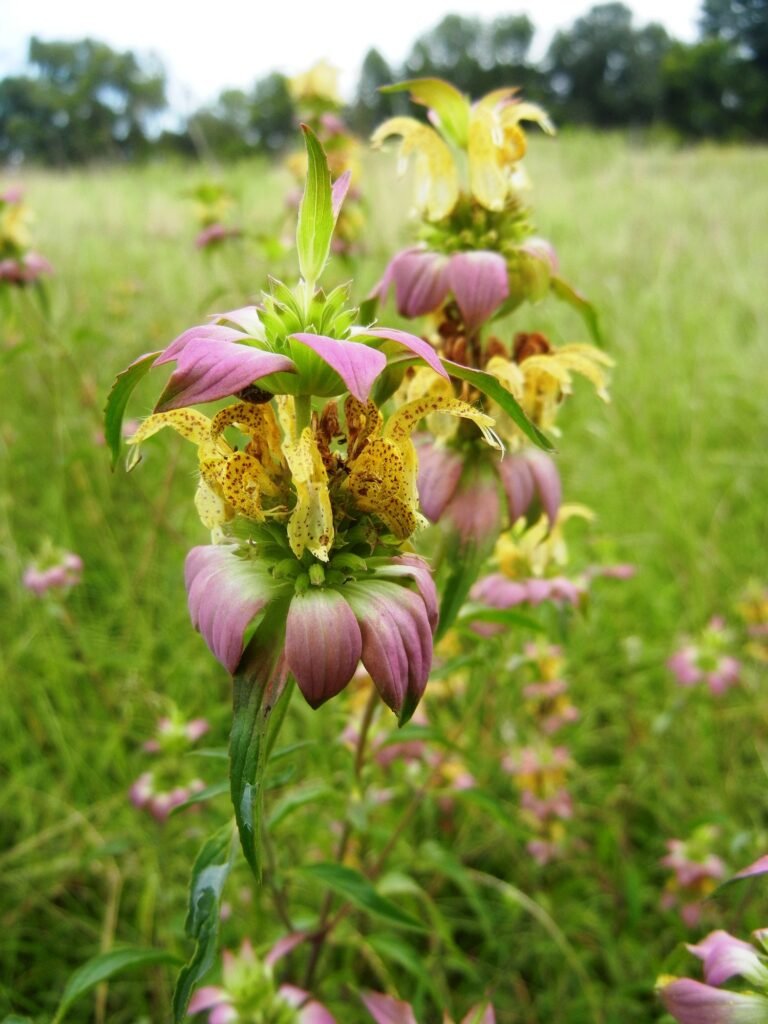
4. Spotted Beebalm (Monarda punctata)
Family: Lamiaceae
Common Names: Spotted Beebalm, Horsemint
Height: 1–3′
Bloom Time: Midsummer to early fall
Flower Color: Creamy with purple spots and pinkish-purple bracts
Native Region: Eastern and Southern U.S.
Hardiness Zones: 4–9
Growing Conditions:
- Sun: Full sun
- Soil: Sandy, well-drained
- Moisture: Dry to medium
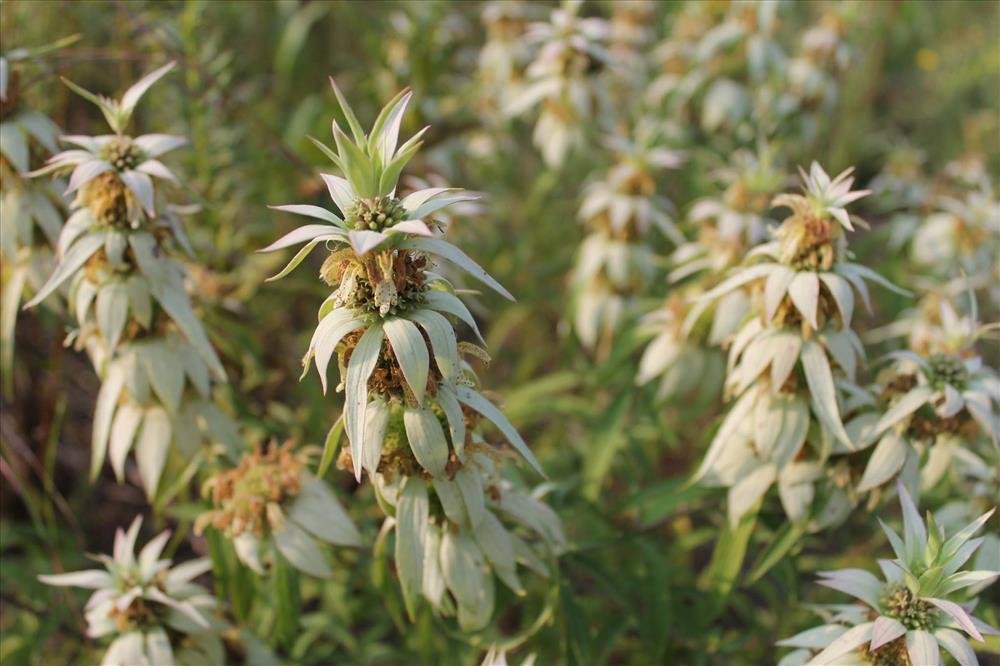
How to Grow:
Easy from seed and quick to establish. Great choice for tough sites, especially dry soils. Avoid rich or overly damp spots.
Wildlife Value:
This one draws a crowd — native bees, wasps, butterflies, even predatory beneficials. Each tiered bloom acts like a pollinator landing pad.
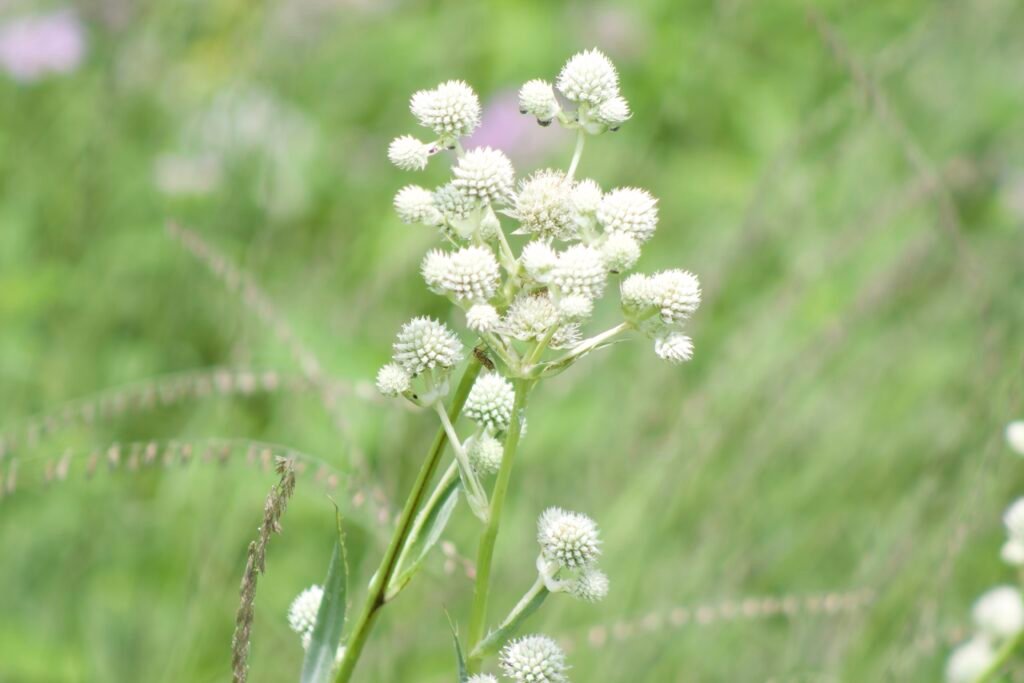
5. Rattlesnake Master (Eryngium yuccifolium)
Family: Apiaceae
Common Names: Rattlesnake Master
Height: 3–5′
Bloom Time: Mid to late summer
Flower Color: Pale green-white globes
Native Region: Central and Eastern U.S.
Hardiness Zones: 3–9
Growing Conditions:
- Sun: Full sun
- Soil: Dry to average, well-drained
- Moisture: Low to medium
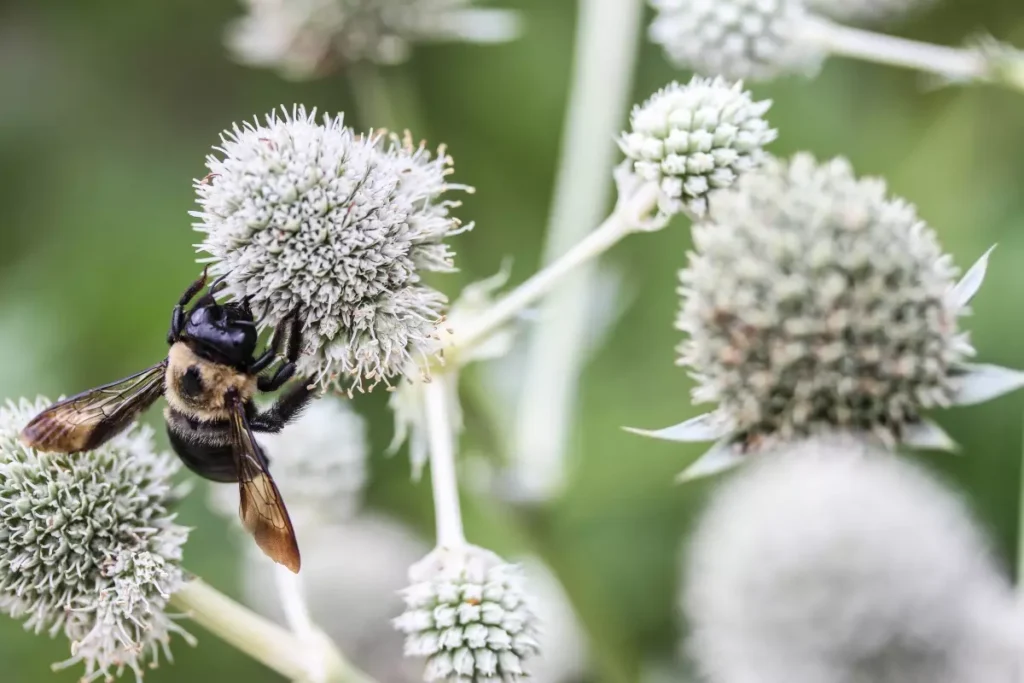
How to Grow:
Start from cold-stratified seed or plugs. Drought-tolerant once established. Adds upright structure and texture to any sunny native planting.
Wildlife Value:
Bees, wasps, and beetles swarm the globular blooms. One of the best insect-attracting natives for open, sunny spaces.
Final Thoughts
These aren’t your everyday native plants. From the alien-looking Passionflower to the strange spikes of Rattlesnake Master, these unique native flowers bring bold form, movement, and serious ecological value. Whether you’re starting small or looking to add flair to an established garden, these five will bring wild energy to any space.
Curious which of these wild beauties fits your yard? We offer native garden design across Northwest Ohio — feel free to reach out. And stay tuned for Part 2: Weird, Rare, and Full of Personality, where we’ll spotlight five more native flowers that keep things interesting.
Check out the hive
The Hive is a personalized native plant database, curated from scientific resources and tailored to your exact ecoregion. It offers detailed growing information for over 75 species.

